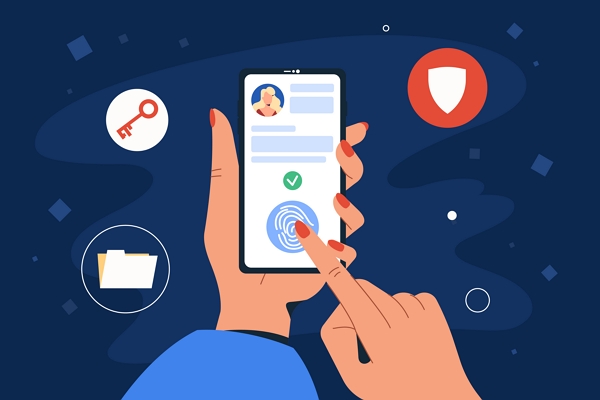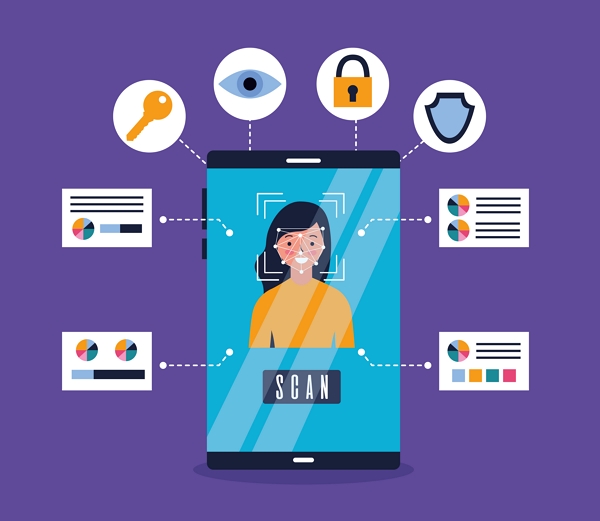Why is Mobile Identity Management important for B2B?
Per data from Statista, there are over 6.92 billion smartphone users today, accounting for nearly 86% of the global population.
As a consequence, the potential dangers posed by security breaches and identity theft are considerable. In fact, according to Embroker, cybercrime has been up 600% since the COVID-19 pandemic.

With these ever-increasing threats, security breaches become a major concern, and this is where Mobile Identity Management (MIM) comes into the fore.
MIM is now a major player in B2B data security. However, what it is and how to implement it best can confuse many people. So, we’ve packed this article full of insight into its significance, techniques, and strategies to effectively implement MIMs.
First things first, let’s talk about what MIM actually is.
1 What is Mobile Identity Management?
‘Mobile identity’ is essentially the term used to describe a user's digital representation when interacting with mobile applications and services.
It's the unique imprint consisting of user credentials, behaviors, and unique attributes that differentiates John, the sales manager, from Lisa, the finance analyst, when they access a mobile app on their respective devices.

MIM is the systematized approach that governs how these identities are created, managed, and secured on mobile platforms. It ensures that only authorized individuals can access specific mobile applications and data.
This management system is crucial in the face of rising mobile device usage and increased cyber threats, in line with IBM's findings, the average data breach costs a company $4.45 million USD.
Due to increasing security risks, businesses and organizations invest heavily in mobile identity management solutions to safeguard their users and data. In 2022 alone, the market size for MIM topped $2.5 billion USD and continues to grow.
Through a sizable investment in MIM, businesses can safeguard their operations and confidential data, while also enhancing user experience through seamless and secure access to mobile services.
Strenthen your Mobile Identity Management with AirDroid Business:
- Security Policies
- Enforced Security Authentication
- Remote Device Wiping
- Application Management
- A Centralized Console
2 Techniques Involved in Mobile Identity Management
Beyond knowing the ins and outs of MIMs, it’s important to grasp the techniques that act as foundations for their functionality.
As businesses grapple with the challenges of mobile identity, they must equip themselves with a diverse toolkit of methods, each catering to distinct elements of security and user experience. We’ve outlined foundational techniques below:
Authentication
Often the first line of defense, authentication validates a user's claim to a specific identity. Typically, this involves credentials like usernames and passwords.
With ever-present mobile devices, they have become pivotal authentication tools, often working in tandem with other techniques.
Biometric Verification
Taking security a notch higher, biometric verification utilizes innate human attributes like fingerprints, facial recognition, or voice patterns.
Given the personal nature of mobile devices, they're ideally suited for such intimate verification methods, offering a blend of convenience and heightened security.

Single Sign-On (SSO)
A boon for user experience, SSO allows users to log in once and access multiple applications without re-entering credentials. This ultimately simplifies the whole login process and shrinks the chances of password-related breaches.
Role-Based Access Control (RBAC)
RBAC ensures that users access only what they're entitled to.
By defining roles within an organization and assigning access rights accordingly, it streamlines permissions, ensuring that, for instance, an intern doesn't inadvertently gain access to executive board meeting notes.
By harnessing these techniques, businesses can craft a robust MIM strategy, balancing security imperatives with seamless user experiences.
3The Importance of Mobile Identity Management for Businesses
Businesses, irrespective of their size or domain, face a surge in cyber threats. As stated by Astra, on average there is a hacker attack every 39 seconds.
With the mobile-centric approach adopted globally, company data is often accessed from various locations, sometimes even on public Wi-Fi networks. While fostering productivity, this flexibility can become a gateway for unauthorized access or data theft.
Consider a healthcare setting...
One of the most breached sectors in 2023: doctors and nurses, constantly on the move, use tablets to pull up patient records.
Without stringent MIM protocols, sensitive patient data could fall into the wrong hands. Or think about financial firms, where executives access critical financial databases on their devices. A single breach and millions could be at stake.

Therefore, mobile identity management systems are not merely a security measure. They become the backbone in a company's trustworthiness, assuring stakeholders and clients that their data, interests, and privacy are always paramount.
4 Best Practices for B2B Mobile Identity Management
It has never been more critical for enterprises, especially those in the B2B sector, to prioritize top-notch security measures in mobile identity management.
Since the B2B industry often handles sensitive information and large transactions, implementing robust security measures is absolutely necessary.
To achieve this, here are some recommended best practices:
● Multi-Factor Authentication (MFA):
More than just a recommendation. MFA compels users to present various verification methods before access is granted.
It's not solely about having the password; it also entails holding a particular object, be it a token or mobile, and validating one's authenticity, possibly through biometrics (e.g. Face ID or thumbprint).
● Unified Identity Oversight:
Companies can simplify administrative tasks and ensure consistent security guidelines by centralizing identity management to oversee user access and rights from a single hub.
● Integration with Device Management:
Merging mobile identity protocols with device management tools ensures that only authorized devices can access business information. In the case of a lost or compromised device, it can be secured or erased remotely.
● Rigorous Password Guidelines:
Based on Idagent's research, over 80% of data breaches are due to poor password security.
Therefore, requiring complex passwords and regular updates is crucial to prevent security threats in B2B exchanges.

5 Streamlining Mobile Identity Management with AirDroid Business MDM
Expanding on our discussion about top-tier practices, let's spotlight some tools to make the journey smoother. A great tool to consider is the AirDroid Business MDM (Mobile Device Management).
Think of MDM as a command center for a business's mobile devices. AirDroid Business offers an all-in-one solution for mobile identity oversight. Below are some of the key features that make it an essential tool:

Enforced Security Authentication
Users can be assigned predefined roles such as Super Admin, Admin, Team Member, and Viewer to define access privileges.
Furthermore, tailor-made roles and permissions can be configured to align with unique organizational needs. This ensures that only authorized devices and users gain access to the network via authentication policies, such as a lock screen password.
This in turn, bolsters device and data protection.
Security Policies
With AirDroid Business, businesses can enforce stringent security protocols such as configuring security protocols across the mobile fleet, deactivating factory reset functions, defining compliant behaviors, and limiting non-compliant behavior.
This ensures that all devices adhere to the company's standards.
Remote Device Wiping
In case of device loss or theft, sensitive data can be erased remotely, safeguarding company information.
Application Management
Control the installation and access of apps to ensure that only essential and secure applications are in use.
It's vital to update software and applications to address security vulnerabilities routinely. This protects against recognized threats and minimizes potential points of attack.
A Centralized Console
This feature offers an integrated perspective on all devices, simplifying the task of management and observation.
Moreover, an IT department can perform remote management and control directly within this console, enabling seamless operations and monitoring.
With tools like AirDroid Business, companies can seamlessly integrate mobile identity management into their operations, ensuring efficiency and security.
6Final Thoughts
Given the surge in mobile users and escalating digital risks, safeguarding mobile engagements is paramount, particularly in the B2B domain handling delicate information.
Just like we use locks and keys to protect our homes, on the internet, methods like authentication, biometric scans, and specific role permissions keep our data safe while ensuring a smooth online experience.
When managing sensitive data, building trust has never been more important. Adopting trusted methods like Multi-Factor Authentication and streamlined identity management is an intelligent move towards that.
A robust MIM is no longer optional for your business but a cornerstone of modern business security and trust. Tools like AirDroid Business MDM epitomize streamlined MIM and should be in every successful business’s arsenal.





Leave a Reply.